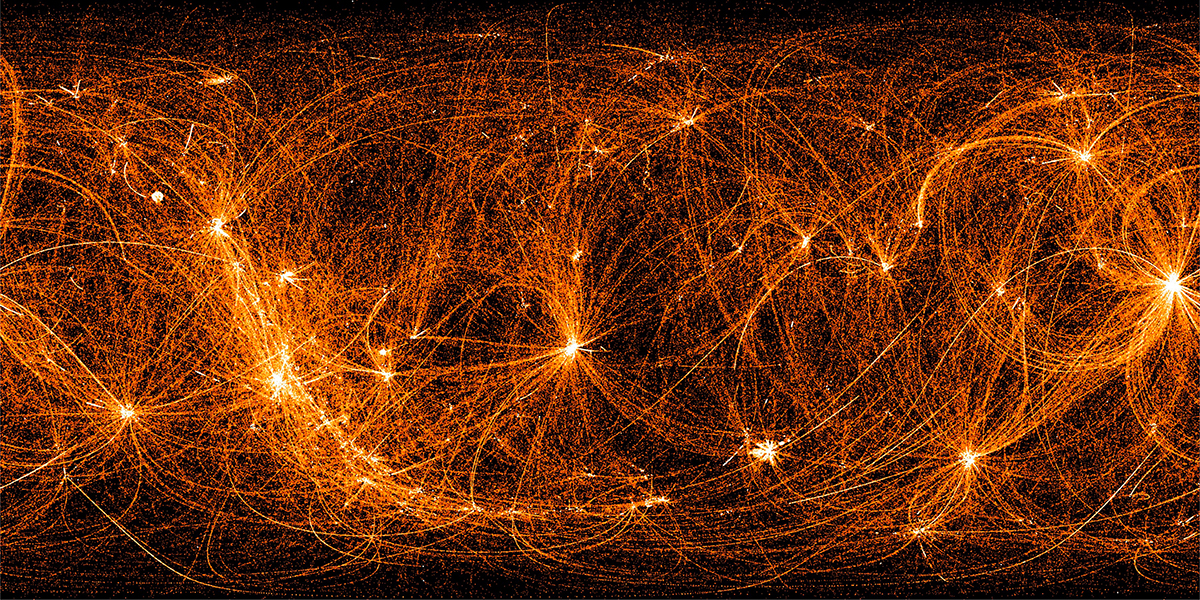Here's What the Universe Looks Like in X-Rays

NASA researchers have unveiled a new treasure map of the universe, and — thanks to a neutron-star-hunting telescope aboard the International Space Station — X-ray marks the spot.
The new all-sky map, uploaded May 30 to NASA's website, shows what the cosmos looks like in high-energy X-ray light. X-rays are among the most energetic forms of light in the universe; they're beamed into space by some of the most extreme objects in the cosmos, including powerful supernova explosions, gas-gobbling neutron stars, and supermassive black holes that suck matter into their maws at near-light-speed.
Humans can't see these arcing streams of light careening around the cosmos (our sight is limited to the much weaker, visible light chunk of the electromagnetic spectrum), but NASA's special X-ray observatory aboard the International Space Station can. Known as the Neutron Star Interior Composition Explorer (NICER), the telescope's primary mission is to study pulsars — fast-spinning, ultra-dense corpses of collapsed stars that pulse with high-energy light as they whirl.
Not only do researchers hope to figure out what, exactly, these stellar corpses are made of, but they also want to use them as waypoints that could help future satellites navigate on auto-pilot — sort of like a galactic GPS system, as a NASA statement put it.
While searching the full night sky for the nearest pulsars, NICER has also turned up some other powerful sources of X-ray light, including the afterglow of a relatively recent supernova (seen in the top left corner of this image).
"This image reveals the Cygnus Loop, a supernova remnant about 90 light-years across and thought to be 5,000 to 8,000 years old," Keith Gendreau, NICER's principal investigator at the Goddard Space Flight Center in Maryland, said in the statement. "We’re gradually building up a new X-ray image of the whole sky, and it’s possible NICER’s nighttime sweeps will uncover previously unknown sources."
Indeed, this map represents only the first 22 months of NICER's orbiting observations (it launched in June 2017), and has likely only scratched the surface of the many stellar mysteries hiding beyond our human sight.
Sign up for the Live Science daily newsletter now
Get the world’s most fascinating discoveries delivered straight to your inbox.
- The 12 Strangest Objects in the Universe
- 15 Amazing Images of Stars
- 9 Strange Excuses for Why We Haven't Met Aliens Yet
Originally published on Live Science.

Brandon is the space/physics editor at Live Science. His writing has appeared in The Washington Post, Reader's Digest, CBS.com, the Richard Dawkins Foundation website and other outlets. He holds a bachelor's degree in creative writing from the University of Arizona, with minors in journalism and media arts. He enjoys writing most about space, geoscience and the mysteries of the universe.









